Charlene Yang
Hierarchical Roofline Performance Analysis for Deep Learning Applications
Sep 22, 2020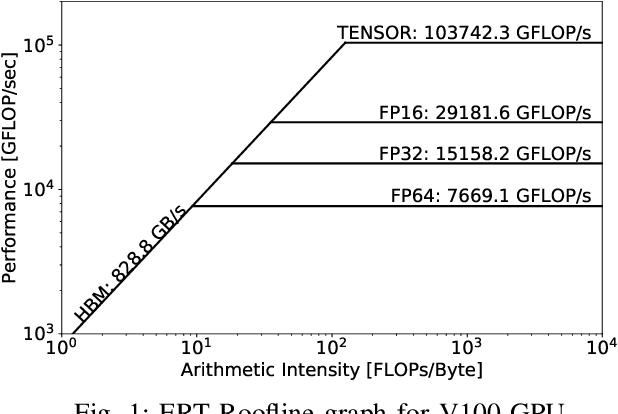
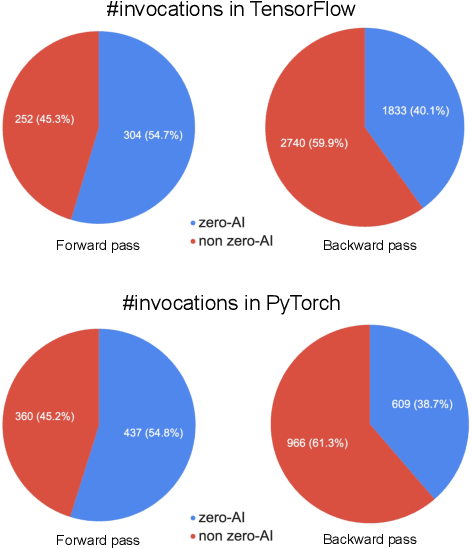
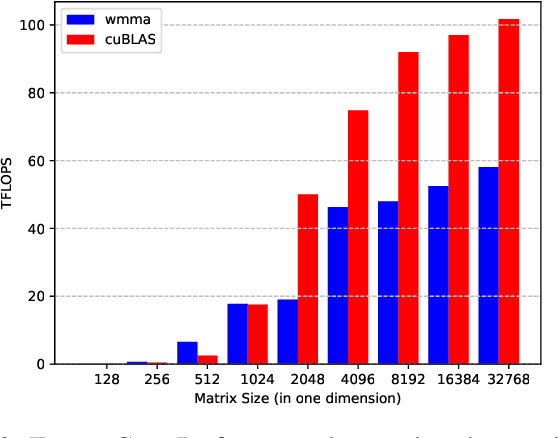
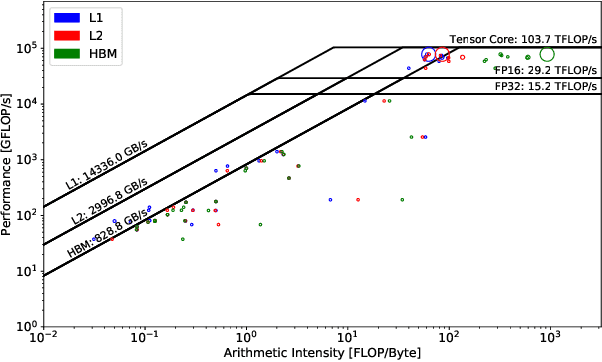
Abstract:This paper presents a practical methodology for collecting performance data necessary to conduct hierarchical Roofline analysis on NVIDIA GPUs. It discusses the extension of the Empirical Roofline Toolkit for broader support of a range of data precisions and Tensor Core support and introduces a Nsight Compute based method to accurately collect application performance information. This methodology allows for automated machine characterization and application characterization for Roofline analysis across the entire memory hierarchy on NVIDIA GPUs, and it is validated by a complex deep learning application used for climate image segmentation. We use two versions of the code, in TensorFlow and PyTorch respectively, to demonstrate the use and effectiveness of this methodology. We highlight how the application utilizes the compute and memory capabilities on the GPU and how the implementation and performance differ in two deep learning frameworks.
Time-Based Roofline for Deep Learning Performance Analysis
Sep 22, 2020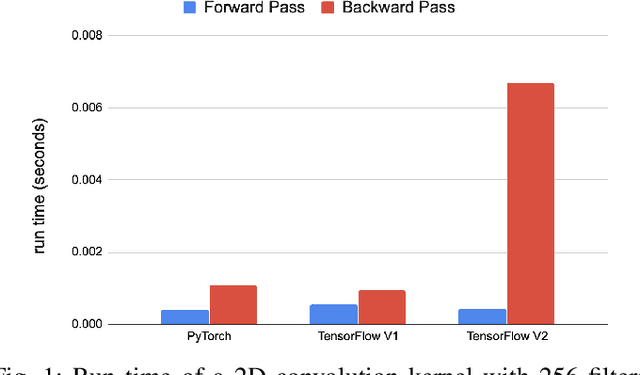

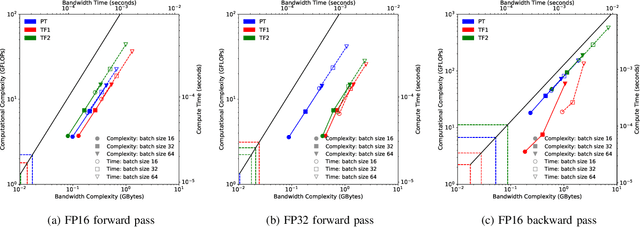
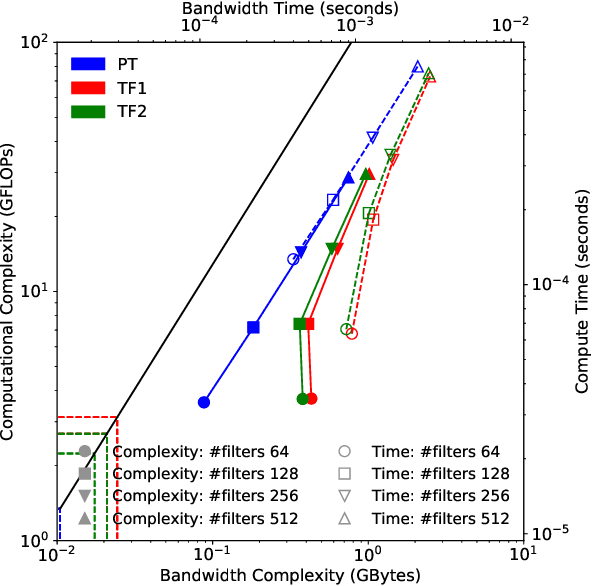
Abstract:Deep learning applications are usually very compute-intensive and require a long run time for training and inference. This has been tackled by researchers from both hardware and software sides, and in this paper, we propose a Roofline-based approach to performance analysis to facilitate the optimization of these applications. This approach is an extension of the Roofline model widely used in traditional high-performance computing applications, and it incorporates both compute/bandwidth complexity and run time in its formulae to provide insights into deep learning-specific characteristics. We take two sets of representative kernels, 2D convolution and long short-term memory, to validate and demonstrate the use of this new approach, and investigate how arithmetic intensity, cache locality, auto-tuning, kernel launch overhead, and Tensor Core usage can affect performance. Compared to the common ad-hoc approach, this study helps form a more systematic way to analyze code performance and identify optimization opportunities for deep learning applications.
 Add to Chrome
Add to Chrome Add to Firefox
Add to Firefox Add to Edge
Add to Edge